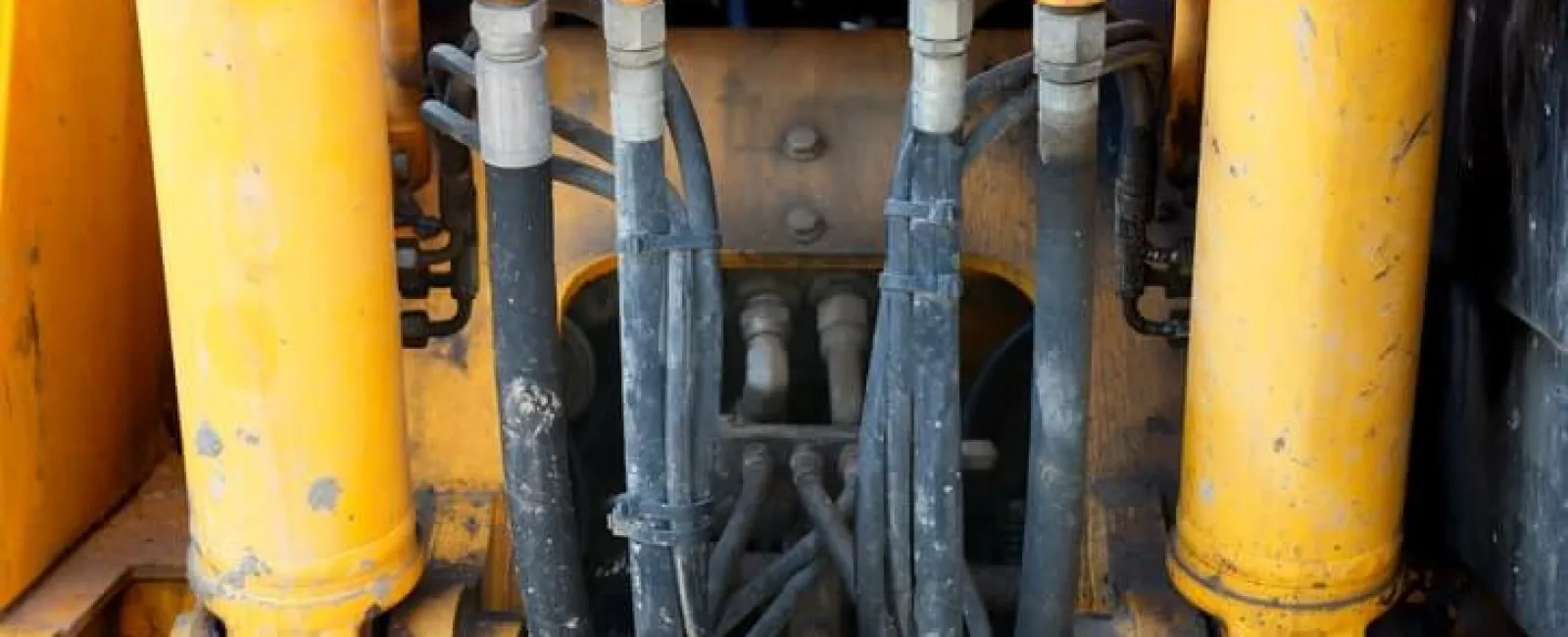If you’re interested but also curious about the industrial hydraulic equipment market, you might be asking yourself, how do hydraulics work?
We’ve been in the industry for a long time: over 30 years! PIRTEK has learned a thing or two over three decades, and we’re always looking to share that information with our franchisees to help them establish and grow a thriving business.
Inside Hydraulics
Hydraulic hoses are specially designed for industrial hydraulic equipment to move hydraulic fluid to components, valves, actuators, and tools (Source: Hose Shop). They often withstand operating at both high pressure and high temperature, and as such, are reinforced and constructed with three layers.
These layers help maintain a consistent flow as well as prevent the hose from breaking down. The inner tube is made from PDFE, thermoplastic, or synthetic rubber, followed by a reinforcement layer consisting of a coil or braided wire. Lastly, the outer layer is made of rigid materials, designed to protect the inside components of the hydraulic hose.
How Do Hydraulics Work?
By applying mechanical pressure, liquids are used to transfer force more efficiently than gas or air. The port’s size can control the force exerted by the liquids. If the ending port is smaller, the force will be stronger.
Hydraulic hoses allow movement from one port location to another and reduce vibrations across manufacturing equipment (Source: Hose Assembly Tips). Thanks to its flexibility, the hose helps line up ports that may be maligned or modified or those that have moving components. In regards to reducing vibration, hoses reduce pressure waves in fluid during motion. By swapping rigid tubes or pipes with hydraulic hose, vibration can be absorbed and thus reduce the resonance or change its pitch, reducing noise intensity.
Hydraulic Hose Repair or Replacement
Our franchisees own and operate stores and fleets of vehicles in order to provide hydraulic hose repair and replacement to all sorts of clients. Customers rely heavily on the expertise of a professional technician from PIRTEK to do the job as many different factors can contribute to malfunction, and ultimately interrupt work flow. As a PIRTEK franchisee you can provide these valuable services.
The general process for repair or replacement of hoses in industrial hydraulic equipment includes (Source: The Hydraulic Hose):
- Finding the leak. By running the equipment, you can determine the location of the leaking fluid and which hose needs repair or replacement.
- Reducing pressure. By turning off the hydraulics and compressed air control switch, you’ll release the pressure from the system and be able to remove the damaged hose.
- Preparing the area. Before removing the hose, a suitable-size container should be placed under the hose to catch any remaining fluids. The fitting should be able to be loosened with a wrench, and some equipment might have to be removed to reach the fitting.
- Setting the hose. After removing the hose, make repairs if possible, and if not, replace the hose. Some cleaning of the area is suggested if there is debris on the fittings or aprons.
- Testing the new hose. Run the system and see if there are leaks in other places. More fluids may be required to test the system fully.
This process is best completed by an experienced technician, as the correct pressure is required to function properly, and that’s why our PIRTEK services are invaluable to our customers.
We hope you’ve learned a bit about how hydraulics work. Consider a franchise with PIRTEK to tap into the recession-resistant market for industrial hydraulic equipment repair and replacement.
PIRTEK’s industrial hydraulic equipment franchise opportunities have been thriving in recent years. Contact us today to learn more about what we have to offer!

